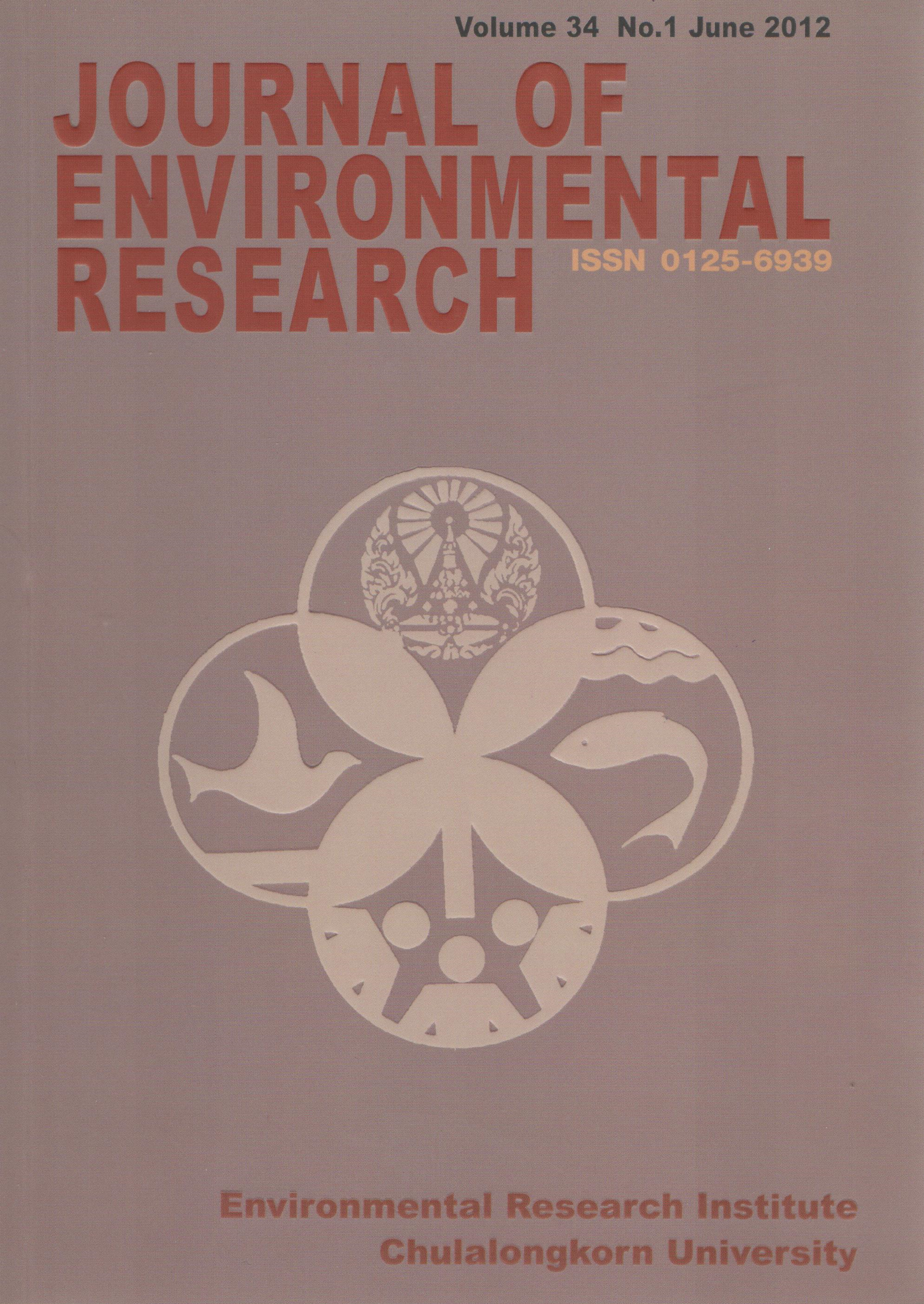Carbon Footprint of an Academic Organization: A Case Study of the Department of Environmental of Environmental Engineering, Chulalongkorn University
Main Article Content
Abstract
This paper presented the carbon footprint evaluation of an academic institution, direct and indirect greenhouse gas (GHG) emissions were calculated. The major sources of GHG emissions were classified into four main categories, which were energy use, materials use, transportation, and waste (wastewater treatment and solid waste disposal). The aim of this research was to evaluate the GHG emissions of the Department of Environmental Engineering, Chulalongkorn University and to develop alternative options for reduction of the GHG emissions using the Life Cycle Assessment Methodology as a key factor. The result showed that the total carbon footprint of the department based on year 2009 was 138.6 tCO2e a-1 and the average carbon footprint per person was 1.08 ton carbon (tC) (permanent staff = 35). From the calculation, energy consumption was considered as the biggest source of CO2 emission that generated 85.2 tCO2e annually. It accounted for 61.5 % of the overall GHG emissions. The second source emissions produced from transportation, waste and materials use were 43.3, 9.5 and 0.6 tCO2e annually or 31.3 %, 6.8 % and 0.4 %, respectively. The implementation option for the reduction of carbon footprint was energy conservation within building. The strategies included use of appliance with high energy efficiency such as air conditioning and lighting as well as turning off air conditioning, lighting lamps and lab equipment when they were not in use. For the waste and materials use, 3R (reduce, reuse, and recycle) is considered to be the powerful strategy that should be promoted to decrease the GHG emissions. This implementation strategy should be carried out along with establishment of incentive system in the organization. A campaign to create and raise awareness on GHG emission problems among the staff members and students was also needed for the organization to achieve sustainable reduction of GHG emissions. The possible GHG reduction option recommended to the department was to replace lamps in the department; T-5 lamps to replace the T-8 lamps. This option’s goals would save money and energy through efficient lighting strategies. The option would have money back in a short time.
Article Details

This work is licensed under a Creative Commons Attribution-NonCommercial 4.0 International License.
Published articles are under the copyright of the Applied Environmental Research effective when the article is accepted for publication thus granting Applied Environmental Research all rights for the work so that both parties may be protected from the consequences of unauthorized use. Partially or totally publication of an article elsewhere is possible only after the consent from the editors.

